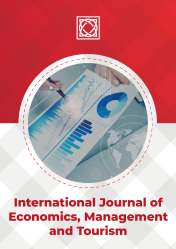THE USE OF QUALITY MANAGEMENT METHODS AND TECHNIQUES
DOI:
https://doi.org/10.46763/IJEMT255107mKeywords:
management, quality, optimization, business processes, improvement.Abstract
This research aims to present various methods and techniques for improving business processes through proactive management. The contemporary approach to process management requires a rapid response to enhance or halt the production process, with quality control emerging as an operational activity primarily focused on process improvement, rather than merely an activity that monitors the current state. For manufacturers to meet consumer expectations, they must adjust the design of the production process, the performance of machines, acquire necessary equipment and technology, use appropriate materials, ensure skilled workers with continuous training and supervision, all while applying Total Quality Management (TQM). Process management, as a key factor in customer acquisition, involves a continuous search for the best technical, technological, marketing, and other improvements. To achieve this, all phases of the process—from the input elements of production and the production process to the creation of the new product—are controlled.
The central question addressed in this paper is: How can methods such as Failure Mode and Effect Analysis (FMEA) and other approaches be optimally applied to eliminate errors in industrial processes to improve quality and productivity?
The aim of this paper is not only to analyze the application of FMEA but also to identify the most effective strategies for implementation, best practices, and possible improvements in business processes.

